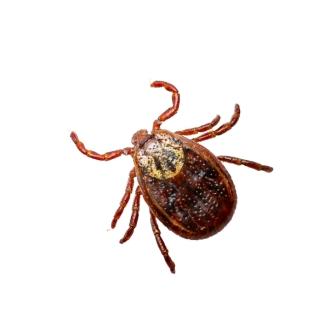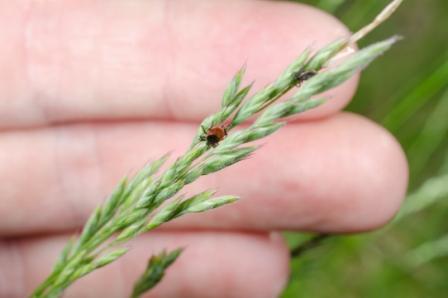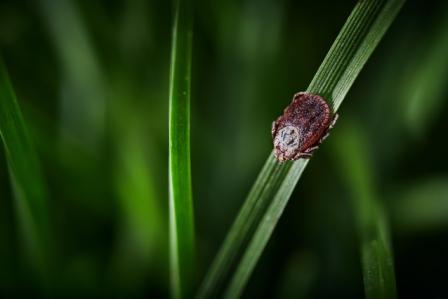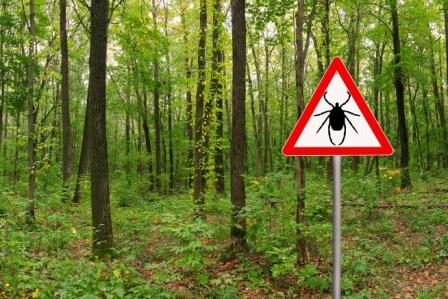Ticks

While ticks don't damage turfgrass, they are a nuisance pest that can be found in and around lawns and landscapes. Controlling them can be done with some of the same products used to control other turf related pests. Ticks are commonly thought of as insects, though they are actually arachnids – related to scorpions, spiders and mites. All members of this group have four pairs of legs as adults and have no antennae. They are typically 3 to 5 mm long. Ticks are external parasites, feeding on the blood of birds, mammals and sometimes amphibians and reptiles. There are many species of ticks, and some species can carry and transmit dangerous diseases to humans and animals.

Lyme disease is the most common and best known vector-borne disease in the United States1. Lyme disease is usually caused by the bacterium Borrelia burgdorferi and rarely, Borrelia mayonii. It is transmitted to humans through the bite of infected blacklegged (deer) ticks. Other vector-borne diseases such as Rocky Mountain Spotted Fever can be transmitted by ticks. These diseases can be debilitating to both humans and pets (particularly dogs). The tick species most likely to carry disease are found in the northeastern quadrant of the United States.

Ticks wait for host animals from the tips of grasses and shrubs (not from trees). When brushed by a moving animal or person, they quickly let go of the vegetation and climb onto the host. Ticks can only crawl - they can’t jump or fly. Ticks found on the scalp have usually crawled there from lower parts of the body. Some species of ticks will crawl several feet toward a host. Ticks are typically active in spring or summer or fall – but can be active on winter days when the ground temperatures are about 45o Fahrenheit.
Control of Ticks Around the Home and Yard

Make sure the property around the home is unattractive to ticks. Because ticks are sensitive to dry conditions and do not thrive in short vegetation, they are seldom a problem in well-maintained lawns. Keep your grass mowed and keep weeds cut. Clean up items that attract tick-carrying rodents (like spilled birdseed), and rodent hiding places (like old wood piles). If ticks are present in the vegetation along the edge of the property, insecticides labeled for control of ticks can be applied to small areas of high weeds that cannot be mowed. Treating a buffer band between wooded areas and maintained yards can be effective. Usually, one or two applications per season will control ticks in these areas. Treat when other pests first appear or when you notice lawn damage. This is normally in the May – June time frame. LebanonTurf Insecticide Products for Tick Control
LebanonTurf has several easy to apply granular products containing active ingredients that are effective and labeled for tick control. The products contain bifenthrin (either on fertilizer on an inert carrier) or lambda-cyhalothrin (on fertilizer in combination with imidacloprid). Be sure to read and follow the directions when using these products.
Consider these products to control ticks:
ProScape 16-0-8 30% MESA .225 Allectus
Lebanon Bifenthrin .1G HDG Insecticide
Lebanon Pro 17-0-3 40% PCU 3% Fe Imidacloprid + Lambda
Other options can be found in our insecticide product section
1 – U.S. Centers for Disease Control and Prevention website.